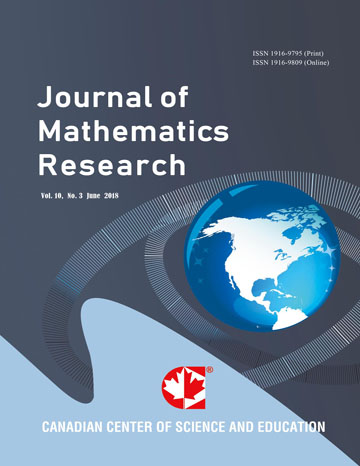Supporting Teachers’ Learning about Mathematical Modeling
- June L. Gaston
- Barbara A. Lawrence
Abstract
In the United States, one of the Standards for Mathematical Practice of the Common Core Curriculum (Common Core State Standards Initiative, 2010) is Model with mathematics. This standard requires that students be taught in a manner that will enable them to “apply the mathematics they know to solve problems arising in everyday life, society, and the workplace” (p. 7). However many prospective and practicing teachers acquire a pedagogical style that does not support this standard. To promote higher levels of student thinking associated with mathematical modeling, teachers must thus be taught not only what mathematical modeling is, but how it can be effectively incorporated in their lessons and presented to their classes. Teacher training should also include how to develop rubrics for assessment, among which are rubrics that enable students to demonstrate mathematical modeling proficiency in different ways. In this research, the topics addressed include ways professional development can help in-service teachers appreciate the importance of mathematical modeling tasks; concerns about teacher backgrounds in mathematical modeling; and the most effective ways for improving in-service teachers’ knowledge of mathematical modeling and their teaching of mathematical modeling. While the primary focus of this research is on teacher education and training in the United States, the findings from both domestic and international research are clearly significant for those who are responsible for various aspects of teacher preparation worldwide.
Common Core State Standards Initiative. (2010). Common Core State Standards for Mathematics (CCSSM). Washington, DC: National Governors Association Center for Best Practices and the Council of Chief State School Officers.
- Full Text:
 PDF
PDF
- DOI:10.5539/jmr.v7n4p1
Journal Metrics
- h-index (December 2021): 22
- i10-index (December 2021): 78
- h5-index (December 2021): N/A
- h5-median (December 2021): N/A
( The data was calculated based on Google Scholar Citations. Click Here to Learn More. )
Index
- Academic Journals Database
- ACNP
- Aerospace Database
- BASE (Bielefeld Academic Search Engine)
- Civil Engineering Abstracts
- CNKI Scholar
- COPAC
- DTU Library
- EconPapers
- Elektronische Zeitschriftenbibliothek (EZB)
- EuroPub Database
- Google Scholar
- Harvard Library
- IDEAS
- Infotrieve
- JournalTOCs
- LOCKSS
- MathGuide
- MathSciNet
- MIAR
- PKP Open Archives Harvester
- Publons
- RePEc
- ResearchGate
- Scilit
- SHERPA/RoMEO
- SocioRePEc
- Standard Periodical Directory
- Technische Informationsbibliothek (TIB)
- The Keepers Registry
- UCR Library
- Universe Digital Library
- WorldCat
Contact
- Sophia WangEditorial Assistant
- jmr@ccsenet.org
